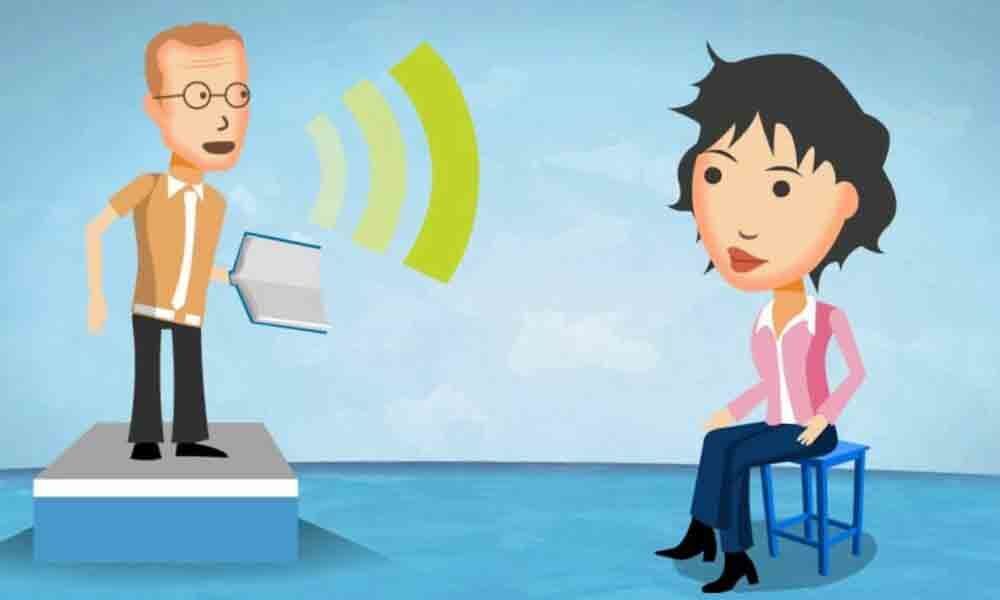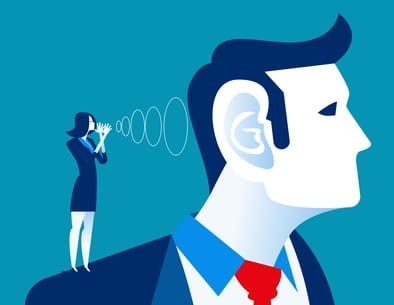
Listening is more than just hearing words. It involves actively paying attention to the speaker, processing the information, and understanding the underlying message. Unfortunately, good listeners are hard to come by today. Most people listen with the intent to reply, and not with the intent to understand and learn. By understanding these different types of listening, you can tailor your approach to various situations. These guidelines will enhance your ability to make others feel seen and heard. (Estimated reading time: 10 minutes)
“When people talk, listen completely. Most people never listen.”
– Ernest Hemingway
Have you ever been in the presence of someone who made you feel seen and heard? Someone who looks at you intently, taking in your every word and gesture and peppering you with questions from a place of genuine curiosity and care?
Probably only a handful of people make you feel this way. That may include a best friend, family member, lover or mentor invested in your success and happiness.
Regardless of your relationship with them, their presence uplifts you. No matter what challenges you face, their willingness to lend an ear and create a safe space to share your concerns lifts a weight off your shoulders and makes your world a little brighter.
Connections like these are special because authentic listening is at the root of any successful relationship, personal or professional. It breeds understanding, cooperation, and harmony between people, allowing them to become their best and most productive selves.
Buddhist monk and peace activist Thich Nhat Hanh calls this form of hearing another person with undivided attention “compassionate listening.” He describes it as a kind of deep listening that can help relieve another person’s suffering. “You listen with only one purpose: to help him or her to empty his heart,” Hanh states.
Attention of this type is one of the purest and rarest forms of generosity. It also happens to be the one almost every individual needs to flourish.
Oprah Winfrey interviewed more than 37,000 people on her talk show, “The Oprah Winfrey Show”. There, she talked to everyone from Michael Jackson and President Obama to regular folks with everyday problems, and she agrees with this sentiment. One commonality she encountered among her thousands of guests, no matter their social standing or circumstances, was that everyone wanted to be seen and heard.
“I can tell you, in your daily encounters, in your kitchen, in your conference rooms, in your work, in all of your relationships…that is what every person you encounter is looking to know, ‘Did you see me?’ ‘Do you hear me?'” Oprah said. Since having this revelation, she has made a conscious effort to be more present in her interactions with others and validate people.
As desired as conscious listening is, it’s difficult to practice. It requires tremendous self-awareness and discipline of thought. We’re all prone to focus on ourselves, and compassionate listening needs us to step out of our bubble. We must set aside our thoughts and tasks and place all our focus on another being.
Despite its importance, so few have been trained in conscious listening. I know it isn’t the easiest thing to do, especially after I completed my life coach training programs, which felt like attending a listener’s boot camp!
Incisive listening skills are the cornerstone of a life coach’s toolkit. As coaches, we aim for the higher levels on the listening continuum. However, I believe we can all become empathetic listeners with the right guidelines and some effort.
By exploring these different types of listening, you will understand how to improve your communication skills and foster better relationships. So, let’s unlock the secret to effective communication through the power of listening.
The importance of effective communication in relationships

Communication is the backbone of any human interaction. Whether it’s expressing our needs and desires, understanding others, or collaborating on projects, effective communication is crucial. It allows us to convey our thoughts, feelings, and ideas, fostering understanding and building connections.
However, communication is not a one-way street. It requires active participation from both the speaker and the listener. While most people focus on honing their speaking skills, the art of listening is often overlooked.
Listening is the key to truly understanding others and fostering meaningful relationships. Before we can understand how to become better listeners, let’s look at what it really means to listen to others in a way that makes them feel heard.
What does it mean to truly listen to someone?
Listening is more than just hearing words. It involves actively paying attention to the speaker, processing the information, and understanding the underlying message. Listening goes beyond the surface level, allowing us to connect with others more deeply.
To master listening, we must be attuned to not just a person’s words but also their tone and body language. A study by Dr. Albert Mehrabian at UCLA revealed that only 7 percent of meaning is in the words spoken, 38 percent in how the words are said, and 55 percent is in facial expression.
A good listener listens not just with their ears but their mind and heart. Compare how you listen when hearing rote instructions from a coworker and when hearing the words of a new love, and you’ll know the difference! In the latter, you engage in a deeper form of listening.
Listening attentively to another person requires that you do it to honor their perspective while expressing a genuine interest in them. You should spend more than half the time giving your undivided attention to your conversation partners, absorbing their perspectives, and reflecting on them.
In his book, “The 8th Habit”, Stephen R. Covey says, “To truly listen means to transcend your autobiography, to get out of your own frame of reference, out of your own value system, out of your own history and judging tendencies, and to get deeply into the frame of reference or viewpoint of another person. This is called empathic listening. It is a very, very rare skill. But it is more than a skill.”
What gets in the way of the types of listening?
Have you ever been around people who talk non-stop? Trying to get a word in while conversing with them seems like a herculean task – they hardly let you open your mouth!
People who like to attract all the attention by dominating conversations come from a place of egocentricity and a need for validation. Having an audience to listen to their problems, achievements, and daily routines gives them pleasure and feeds their ego. They’re stuck in their own self-importance, closed off to the possibility of learning from other’s experiences.
Only when we step out of that bubble can we access new vistas of knowledge and wisdom through others’ words. Everyone we meet has unique perspectives, experiences, and information that can enhance us.
Unlike what many think, being verbose does not make a person a good communicator. A master communicator knows that the key to successful and respectful communication is to listen equally, if not more, when speaking with others. The most cultured, wise, and erudite individuals do more listening than talking. They display poise, grace, and humility.
Unfortunately, good listeners are hard to come by. A study in the book “Business Communications: Strategies and Skills” uncovered that the average person absorbs only 25% of what they hear. Based on these stats, most of us miss crucial information and opportunities to build enriching connections.
In our quick-fix society, most people lack patience and have shorter attention spans than the generations before us. This is evident in the kind of media being consumed today. Watch a classic movie or listen to an ’80s ballad, and you’ll notice that it has a slower rhythm with a stronger focus on conversation and lyrics than what we’re used to today. The new media diet is leaner, bite-sized, and visually driven to appeal to the newer generations’ need for brevity.
In a fast-paced world where no one wants to slow down, be still, and just listen, it’s refreshing to come across someone who can be fully engaged and present — who listens, not with the intent to reply, but to understand and learn. Fortunately, deep listening is a skill that can be developed and honed with practice.
The different types of listening

There are several different types of listening, each with its own unique characteristics and benefits. By understanding these different types of listening, you can tailor your approach to various situations and enhance your communication skills.
You’ll also gain a comprehensive understanding of how to improve your communication skills and foster better relationships. Here are five different types of listening that you will encounter in your everyday interactions.
1. Active listening: The art of truly hearing
Active listening is the most basic form of effective listening. It involves fully engaging with the speaker, demonstrating empathy, and providing appropriate feedback. Active listening requires setting aside distractions, such as phones or other tasks, and giving your full attention to the speaker.
To practice active listening, maintain eye contact, nod or provide verbal cues to show you are engaged, and ask clarifying questions when needed. This listening not only helps the speaker feel heard and understood but also allows you to gain a deeper understanding of their perspective.
2. Reflective listening: Empathy and understanding
Reflective listening goes beyond simply hearing the speaker’s words. It involves accurately understanding and responding to their thoughts and feelings. Reflective listening requires empathy and the ability to put yourself in the speaker’s shoes.
To practice reflective listening, paraphrase the speaker’s words to ensure you understand their message correctly. Reflect their emotions and feelings back to them to show that you truly listen and understand their perspective. Reflective listening helps to build trust and strengthen relationships by demonstrating that you genuinely care about the speaker’s thoughts and feelings.
3. Critical listening: Evaluating and analyzing information
Critical listening involves evaluating and analyzing the information presented by the speaker. It requires actively listening to the content, questioning assumptions, and critically assessing the validity and reliability of the information.
To practice critical listening, listen for key points, identify any biases or logical fallacies, and ask probing questions to gain a deeper understanding. Critical listening helps you become a more discerning listener, enabling you to separate fact from opinion and make informed decisions based on the information at hand.
4. Appreciative listening: Finding joy in listening
Appreciative listening involves listening for enjoyment and pleasure. It allows you to fully immerse yourself in the speaker’s words and find value in their message. Appreciative listening is often used when listening to music, poetry, or inspirational speeches.
To practice appreciative listening, let go of any distractions and fully immerse yourself in the speaker’s words. Allow yourself to be moved by their message and find joy in the experience. Appreciative listening helps to foster a sense of connection and appreciation for the speaker’s words.
5. Empathetic listening: Connecting on an emotional level
Empathetic listening goes beyond understanding the speaker’s words and emotions. It involves connecting with them on an emotional level, showing compassion, and providing support. Empathetic listening is particularly important in situations where the speaker is sharing their feelings or going through a difficult time.
To practice empathetic listening, put yourself in the speaker’s shoes and try to understand their emotions and experiences. Show empathy through your body language, facial expressions, and supportive comments. Empathetic listening helps to create a safe and supportive environment, fostering trust and deepening relationships.
Seven steps to enhancing your listening skills

Besides understanding the different types of listening, you can improve your skills by keeping certain things in mind when speaking with others. Here are seven guidelines to make others feel seen and heard:
1. Remove distractions: Avoid multitasking and eliminate distractions that may hinder your listening ability.
2. Be present: Give your full attention to the speaker and be fully present in the conversation.
3. Avoid interrupting: Allow the speaker to finish their thoughts before responding or asking questions.
4. Practice empathy: Put yourself in the speaker’s shoes and try to understand their perspective and emotions.
5. Ask clarifying questions: If you’re unsure about something, don’t hesitate to ask for clarification to ensure you understand the speaker’s message correctly.
6. Avoid judgment: Suspend judgment and approach the conversation with an open mind.
7. Reflect and summarize: After the speaker has finished, reflect on what they said and summarize their main points to ensure you understood their message.
As empathetic beings, one of the best things we can do is to listen to each other from the heart. When you listen from your heart, you can appreciate the humanity in another person. You see through the ego-based façade and connect with their soul. This type of communication can transport you to a high-dimension of being in the world marked by deeper and profound connections.
All my best on your journey,
Seline

Questions for you: What types of listening do you tend to engage in the most? Do you think it enhances or inhibits your communication abilities?
Did you like this post? Sign up below, and I’ll send you more awesome posts like this every week.

These are all such wonderful points! I am so happy to see something like this online because many people shy away from topics and discussions like this. So, kudos to you for being brave and putting this out there for us!
Far too many people do not realize there is a difference between hearing and listening and understanding! I think there are many arguments, misunderstandings, and conflicts that come from this breakdown.